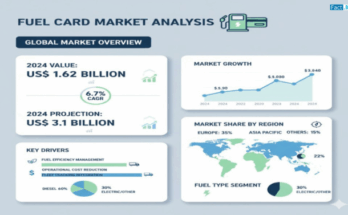A beverage can is a container that is commonly used for carrying liquids such as vegetable juices and fruit juices, carbonated drinks, beers, and ready-to-drink coffee and tea. Moreover, these cans are made of plastic, metal, or aluminum, among other materials.
Beverage cans offer various benefits such as these are convenient and portable, besides being sturdy and lightweight, making them a preferred choice, especially for those living active lives.
Aluminum beverage cans are gaining traction due to surge in plastic pollution. Moreover, beverage cans have various environment-friendly advantages also. For instance, beverage cans have a better recycling rate than other materials such as glass. Besides these, cans can be completely recycled without any loss in performance. Also, aluminum recycling consumes approximately 95% less energy than aluminum production than raw sources.
Besides this, beverage can producers are witnessing an increased demand for environment-friendly containers as a consequence of the pandemic. In addition to this, high sales of healthy ready-to-drink drinks are picking up due to high investments in high-quality beverage cans.
Rise in developments in beverage can designs and technology
Recent developments in beverage cans design and technology are projected to boost the global beverage cans market growth.
- For instance, Ardagh Group, a major beverage cans producer, is offering custom-shaped metal cans for the premium iced coffee brand Gaya Gold Coffee.
- Interestingly, these excellently crafted cans have already made a big impression in the UAE market and will soon be available in other Middle Eastern nations.
Beverage cans manufacturers are also focused on various technologies, such as temperature-sensitive inks, to make cans attractive and convenient to use. These initiatives have encouraged manufacturers to be more innovative in how they create their packaging.
Surge in concerns about use of hazardous materials act as a restraint to the market
Aluminum cans usually coat the inside of the cans with thin plastic coating to prevent aluminum from leaking into drinks, exposing them to harmful levels of Bisphenol A. Moreover, customers may experience some side effects too such as cancer, polycystic ovarian diseases, and infertility.
Even though aluminum cans are recyclable, half of aluminum cans wind up in landfills. Moreover, nitrogen and sulfur dioxide are generated during aluminum smelting, including acid and smog rain.
Moreover, growing concerns about hazardous materials are also a major factor expected to boost the growth of global beverage cans market.
By application segment, alcoholic beverage cans offer lucrative opportunities
Alcoholic beverage cans have held majority of the share of the global market in 2021. This high segment is also linked to rise in disposable income, rising millennial demand for beverages, and surge in consumer demand for premium alcoholic products.
In addition to this, easy availability of range of alcoholic beverages in supermarkets is projected to boost consumption, benefiting segment growth.
Beverage cans market is highly fragmented
The beverage cans market is highly fragmented with presence of several leading companies. Leading players in the market are putting emphasis on competitive pricing and technological improvements. Besides this, to improve their market position, the majority of the companies have adopted inorganic and organic growth tactics.
- In July 2021, Ball Corporation established new aluminum beverage packaging factories that can manufacture millions of cans annually.
- Moreover, Ball Corporation also has plans to build additional operations in Western Russia and the East Midlands of the United Kingdom, adding billions of cans per year to its current capacity.
- Each factory is expected to produce billions of cans per year in a variety of sizes and formats.


